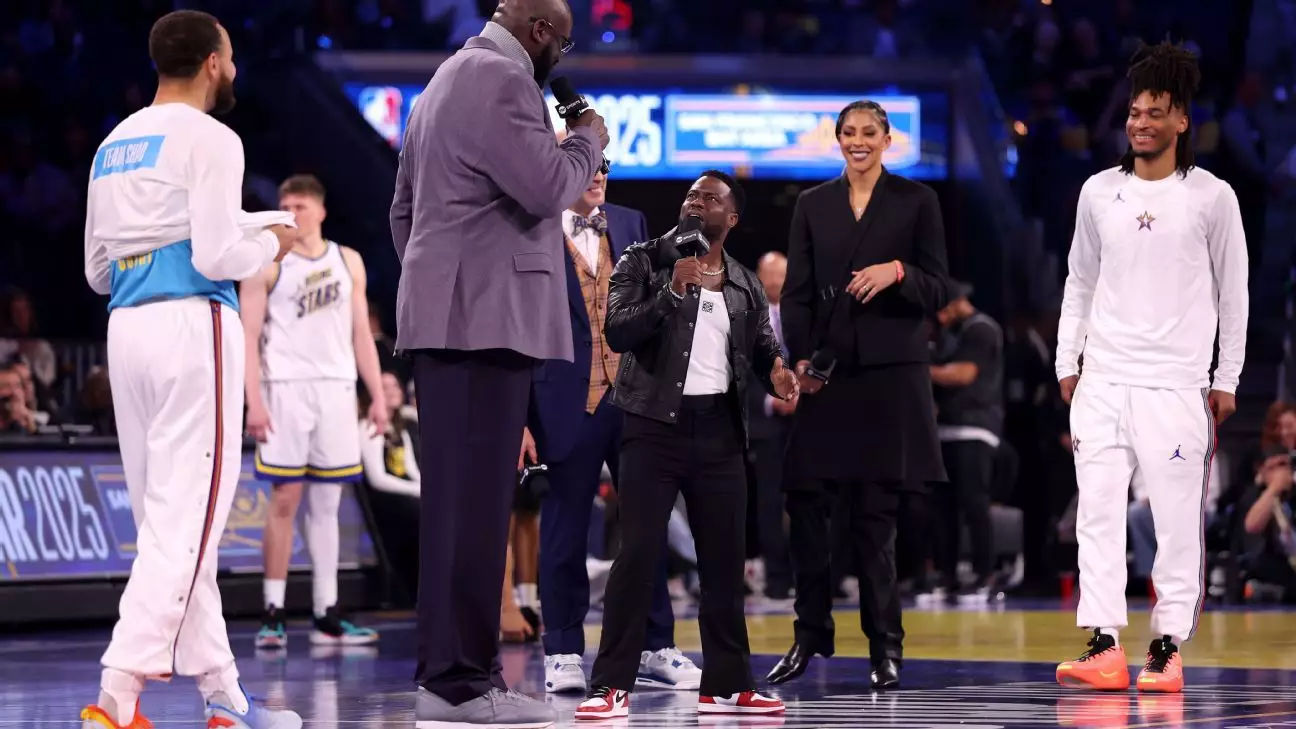The NBA All-Star Game has long been a celebration of basketball’s brightest talents and an event that captivates fans across the globe. However, the new tournament-style format introduced this year has sparked a flurry of opinions—both favorable and critical. As the league attempts to inject fresh excitement into this time-honored event, the balance between entertainment and competitiveness remains a hot topic of debate among players and analysts alike.
This year, the NBA pivoted away from the conventional East vs. West matchup, introducing a unique four-team, single-elimination setup with a target score of 40 points for each round. Analysts from TNT, including Charles Barkley and Shaquille O’Neal, drafted the teams, while a team led by Candace Parker emerged from the Rising Stars event. This radical change aimed to enhance the liveliness of the All-Star Game, but immediate reactions from the players showed a mix of indifference and dissatisfaction.
One of the primary critiques from players like Trae Young was the abundance of breaks sprinkled throughout the tournament. “I didn’t like the breaks,” he said, citing the interruptions as detrimental to the flow of the game. Young’s remarks illustrate a deeper concern—a feeling that the game was engineered as a vehicle for television ratings rather than an authentic showcase of basketball talent. In an age where athletes are becoming more vocal about their experiences, it’s no surprise that many players desire a more genuine competition rather than theatrics that hinder gameplay.
The interruptions during gameplay became a significant point of contention. The audience at Chase Center, while entertained by comedian Kevin Hart’s banter, may have felt the game’s excitement waning during these pauses. The championship match experienced a notable break of nearly 20 minutes to honor the TNT broadcast team, which further diluted the competitive spirit that fans yearn for.
Jaylen Brown aptly pointed out that frequent interruptions are not conducive to physical play. “It’s not ideal to stop like that,” he stated, emphasizing a need for a rhythm that mirrors regular-season intensity. Indeed, while player safety and fan engagement are crucial, the core objective of an All-Star Game should still revolve around presenting a product that mirrors the competitiveness of the NBA.
Despite the interruptions, players like Shai Gilgeous-Alexander shared a slightly more optimistic view, stating, “I had fun, nonetheless.” It’s clear that the competitive edges were visible, with veterans like Stephen Curry leading Shaq’s OGs to victory against Chuck’s Global Stars. Curry, who claimed the MVP title for the evening, emphasized the necessity for change, remarking that last year’s game lacked the excitement that fans crave.
Durant’s acknowledgment that the new format required some adaptation hints at a broader issue within the league—continuously evolving strategies aimed at revitalizing an event that has seen dwindling interest over the past few years. The absence of prominent athletes like LeBron James and Giannis Antetokounmpo due to injuries certainly dampens the enthusiasm surrounding the event, raising questions about the future of the All-Star format.
One of the more contentious points raised was the inclusion of first- and second-year players, generating skepticism from seasoned players like Draymond Green. He voiced frustration over new talents having access to the All-Star stage, criticizing the decision as a reflection of the league’s struggles with viewership. For Green and others, the All-Star Game served as a rite of passage that should not be diluted by including less experienced players.
This tension points to a pivotal question: How can the NBA preserve tradition while keeping up with a rapidly shifting landscape? The growing roster of young talent is undeniably a strength; thus, finding a way for these players to shine outside conventional All-Star settings could hold the key to reimagining the future of the event.
As the NBA seeks to refine its All-Star Game, it must weigh player feedback seriously to craft an experience that balances entertainment and competitiveness. Building on the players’ suggestions could lead to eliminating unnecessary breaks, enhancing gameplay flow, and redefining the roles of younger players. Engaging the players in this evolution will be essential in rekindling the All-Star Game’s prestige—transforming it into a must-watch showdown rather than just another televised exhibition.
The NBA stands at a crossroads, aiming for a perfect blend of nostalgia and innovation. But as the feedback rolls in, one thing becomes clear: merely altering the format isn’t sufficient to revitalize the All-Star Game—minimizing interruptions and fostering genuine competitive spirit will be crucial to its enduring success. The star-studded lineup deserves a stage worthy of their talents, and the next All-Star Game could be the pivotal moment that sets the course for years to come.


Leave a Reply